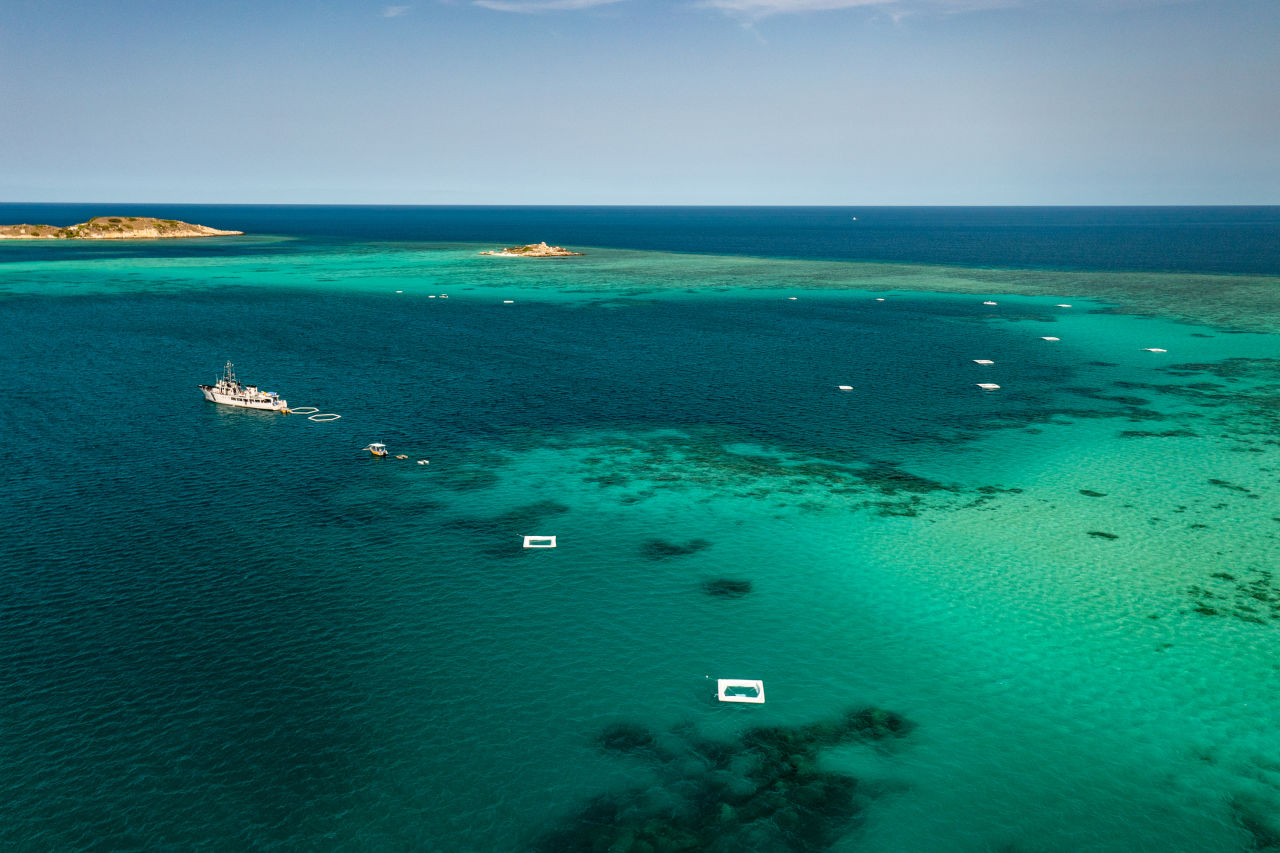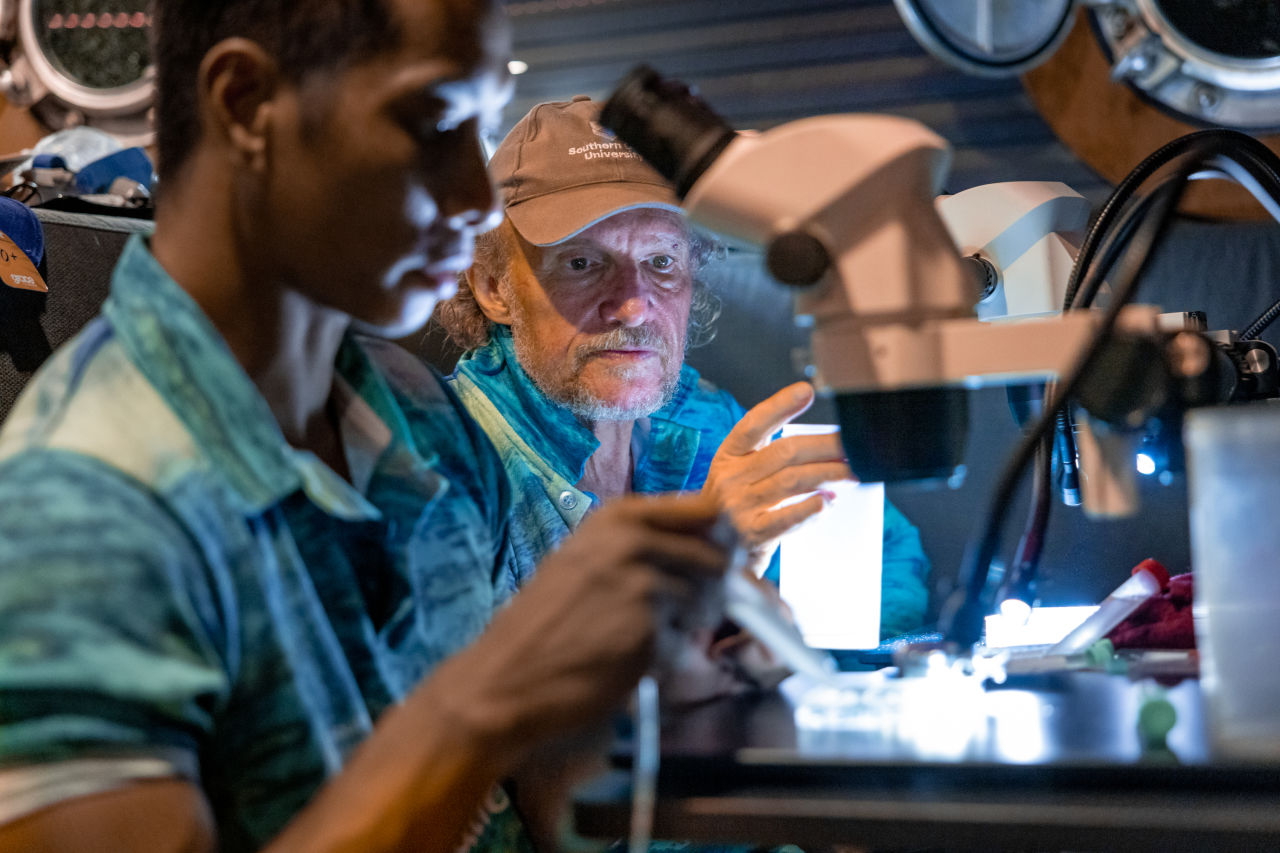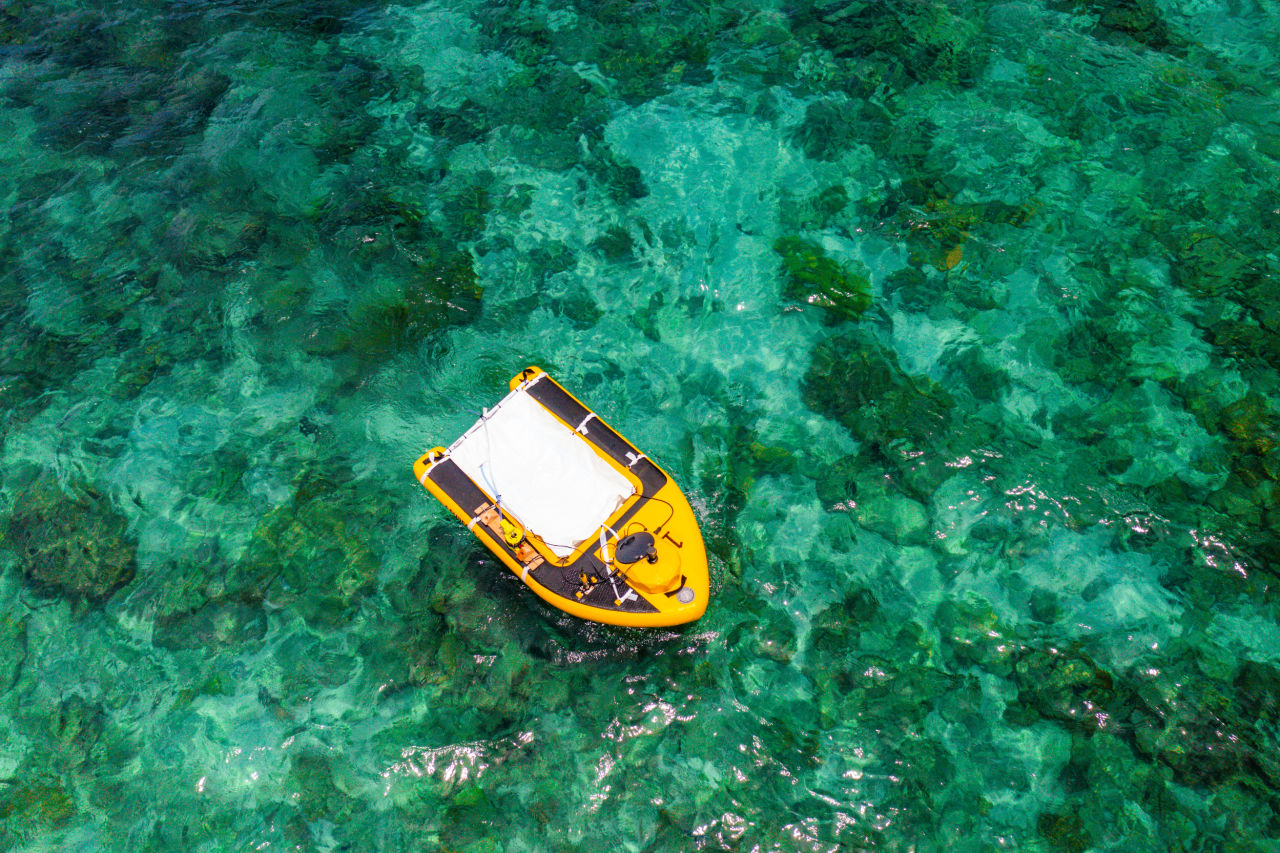Millions of Coral IVF babies have been released in the waters around Lizard Island to help damaged reefs in the area recover.
Lizard Island, in the Great Barrier Reef's far north, has suffered multiple disturbances since 2014 including crown-of-thorns starfish outbreaks, severe cyclones and three mass coral bleaching events.
Researchers hope some of the larvae - or tiny juvenile corals - will settle and grow on the Reef, replenishing the coral that has been lost.

Lizard Island's Blue Lagoon. Credit: Southern Cross University
The deployment exercise is part of an innovative coral restoration technique dubbed Coral IVF, which aims to repopulate damaged reefs at a large scale.
The technique was pioneered on the Great Barrier Reef by Distinguished Professor Peter Harrison. During last month's spawning event, Professor Harrison worked closely with research partners CSIRO and QUT Brisbane to collect coral spawn and grow the larvae in floating ocean pools.
"The research at Lizard Island has been highly successful and our combined team has successfully completed all the planned experiments to deliver millions of healthy coral larvae onto target reef sites that haven't recovered naturally from recent severe bleaching events," Professor Harrison says.
"We will use the results from our successful experiments to refine the methods and optimise mass larval culture and delivery during future mass coral spawning periods, to increase the areas of reef we can start to restore."

Researchers are working to scale-up Coral IVF so it can be used to restore large areas of damaged reefs. Credit: Southern Cross University
QUT Professor Matthew Dunbabin and his team have developed and built three new AI-enabled robots dubbed LarvalBots to collect coral spawn and deploy larvae, which were successfully used throughout the trial.
"This year we had three of the robotic boats, which were firstly used to collect coral spawn," Professor Dunbabin says.
"Then they were reconfigured to autonomously generate high-resolution 3D maps of large areas of the reef for larval release, and then reconfigured again to autonomously deploy the larvae directly to suitable restoration locations."

AI-enabled robots, dubbed LarvalBots, were used to collect coral spawn and deploy larvae. Credit: Southern Cross University
Great Barrier Reef Foundation Managing Director Anna Marsden says these innovative new solutions are helping combat the effects of climate change, which are already being seen on the Great Barrier Reef.
"In addition to reducing emissions, we need to pioneer new solutions to restore lost reefs and help corals adapt to warming temperatures if we want to protect the Reef for future generations," she says.
"That's why we're trialling new solutions like this large-scale fertility treatment, which integrates with a toolkit of interventions being developed through the Reef Restoration and Adaptation Program."
This research is part of the Reef Restoration and Adaptation Program which is funded by the partnership between the Australian Government's Reef Trust and the Great Barrier Reef Foundation. Partners include the Australian Institute of Marine Science, Great Barrier Reef Foundation, CSIRO, The University of Queensland, QUT, Southern Cross University and James Cook University.






